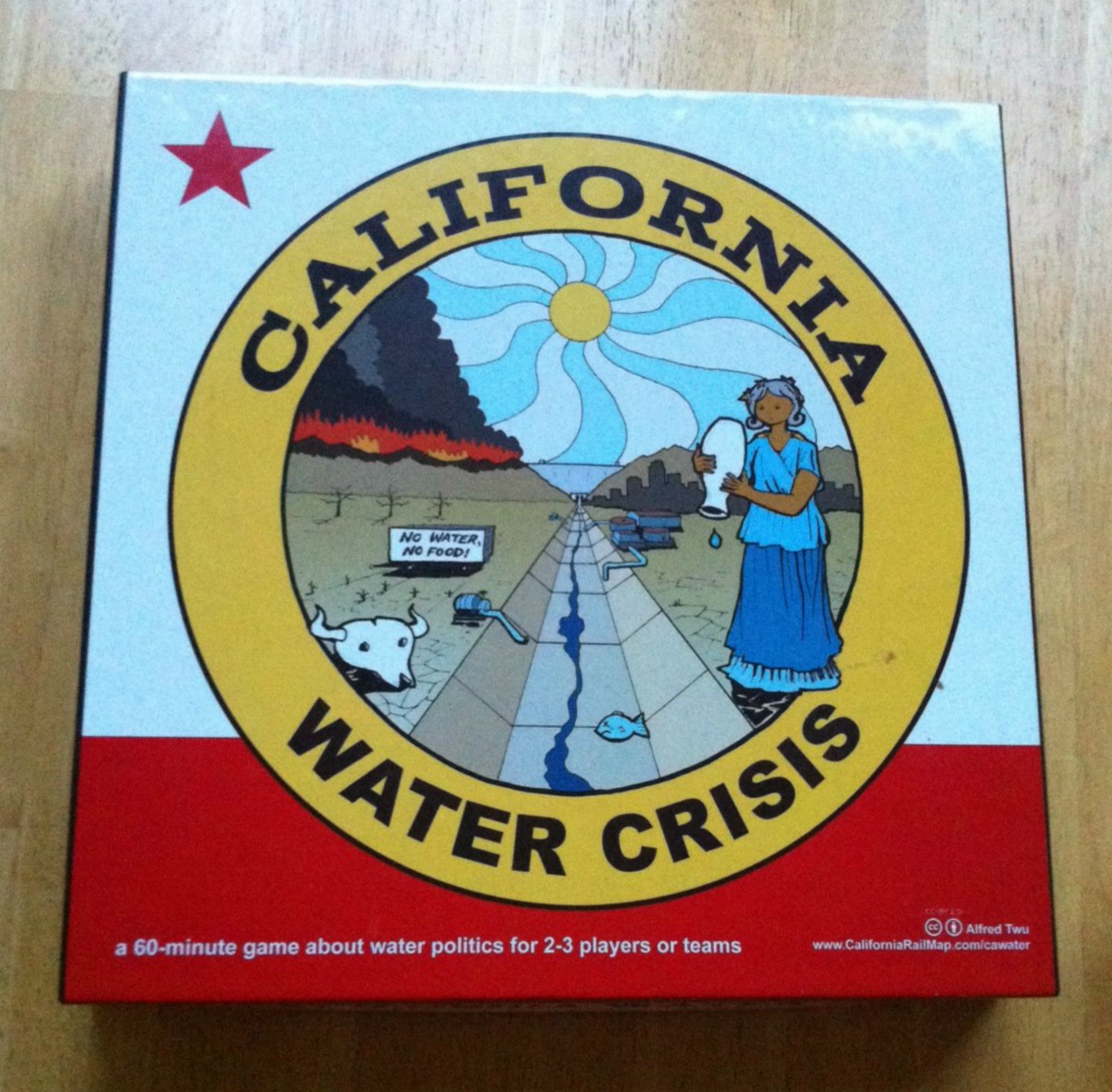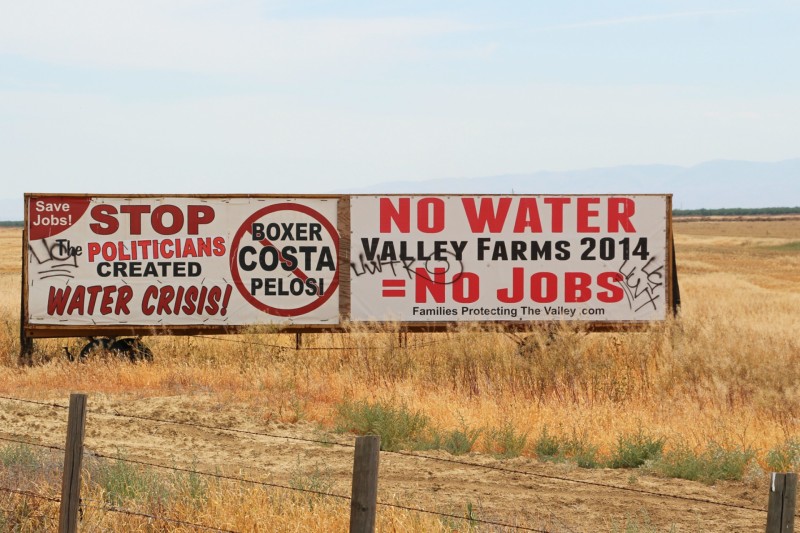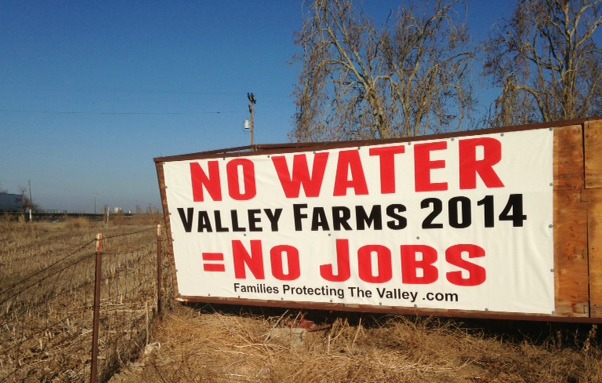They’re a ubiquitous sight on the I-5: giant signs posted along the highway blaring dire messages about the water supply, farming, and what's endangering both (politicians, mainly).
While the signs have been up for nearly a decade, they’ve taken on a particular resonance in the last few years. Years of record low rainfall and the subsequent drought have left once-fertile fields dry and barren. For sheltered city dwellers, the signs are a stark reminder of California's never-ending water fight.
The signs are the work of Families Protecting the Valley (FPV), a loosely organized group of farmers and concerned locals in the San Joaquin Valley, whose mission is to add another voice to the state’s ongoing conversation about water. Armed with a small budget and the support of the local community, the group is trying to take back the water narrative from politicians, businesses and environmentalists.
“The environmentalists, you’ve got to give them credit,” said Denis Prosperi, founder of Families Protecting the Valley. “They’ve done a hell of a PR job convincing people that there’s enough water for fish and farmers, enough water for everybody, we've just got to manage it differently. Well, there’s not. There never was.”
The Madera farmer (almonds and wine grapes) started the organization in 2000, when Enron was trying to build a $45 million water bank in Madera County. Residents and local businesses donated time and money to oppose the project, and managed to successfully kill it. The group was dormant for a few years, re-constituting to fight the San Joaquin River Restoration Program, which it believed would have debilitating effects on the surface water supply for farmers. The river restoration program, designed “to restore and maintain fish populations in ‘good condition’ in the main stem of the San Joaquin River below Friant Dam to the confluence of the Merced River," was the result of a settlement agreement in a lawsuit filed by environmental groups. Prosperi formalized the group during this period, putting together a board of directors, and setting up a website and email newsletter.

Since then, the group has been agitating for the rights of farmers to have continued access to water, and has offered many suggestions for how the state’s budget and water supply should be allocated. Despite the agriculture lobby’s powerful presence in Sacramento, the group doesn't feel heard. It wants the valley's sizable role in both the state’s economy and on the nation’s dinner table to be reflected in the water farmers there receive.

